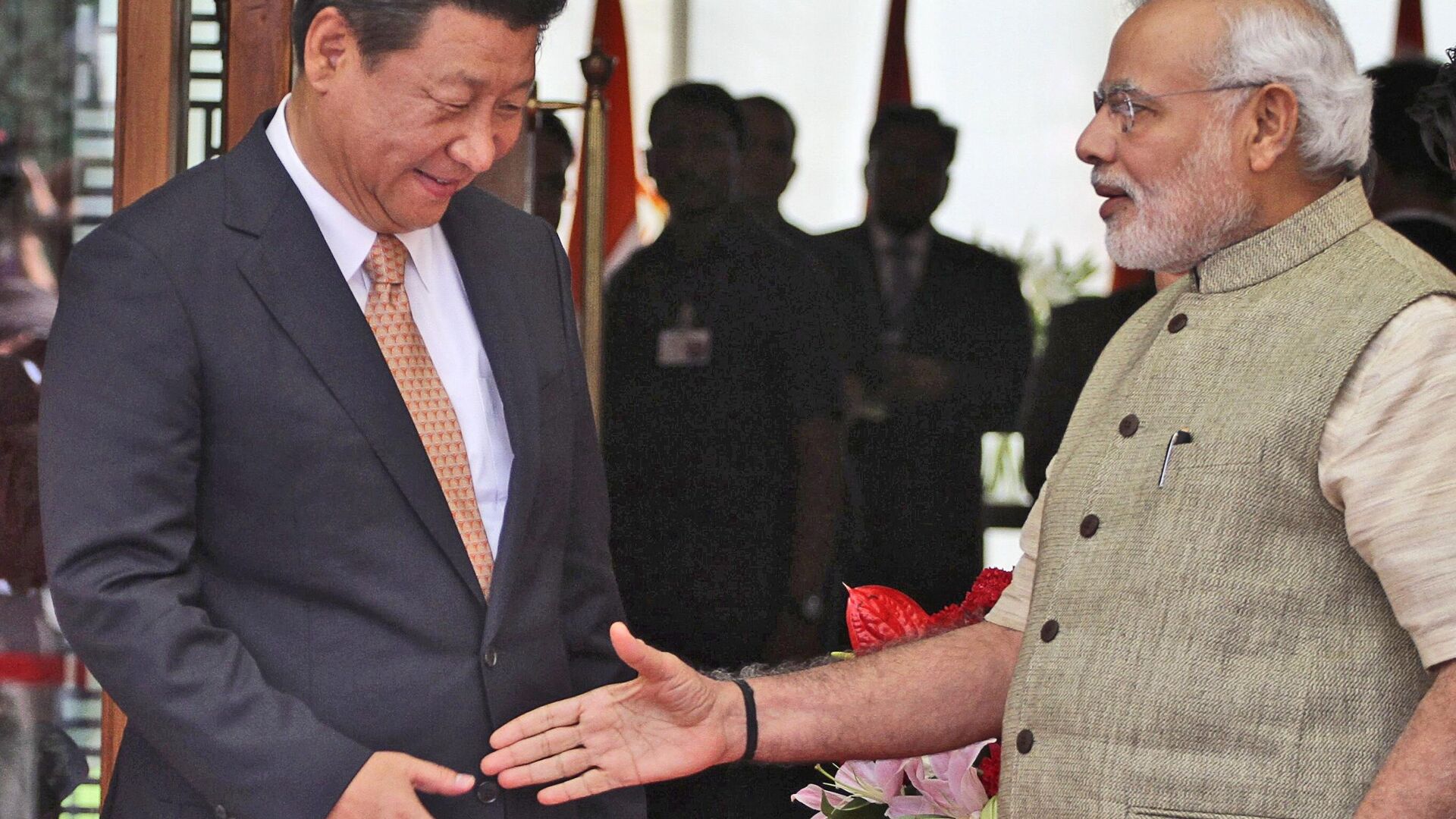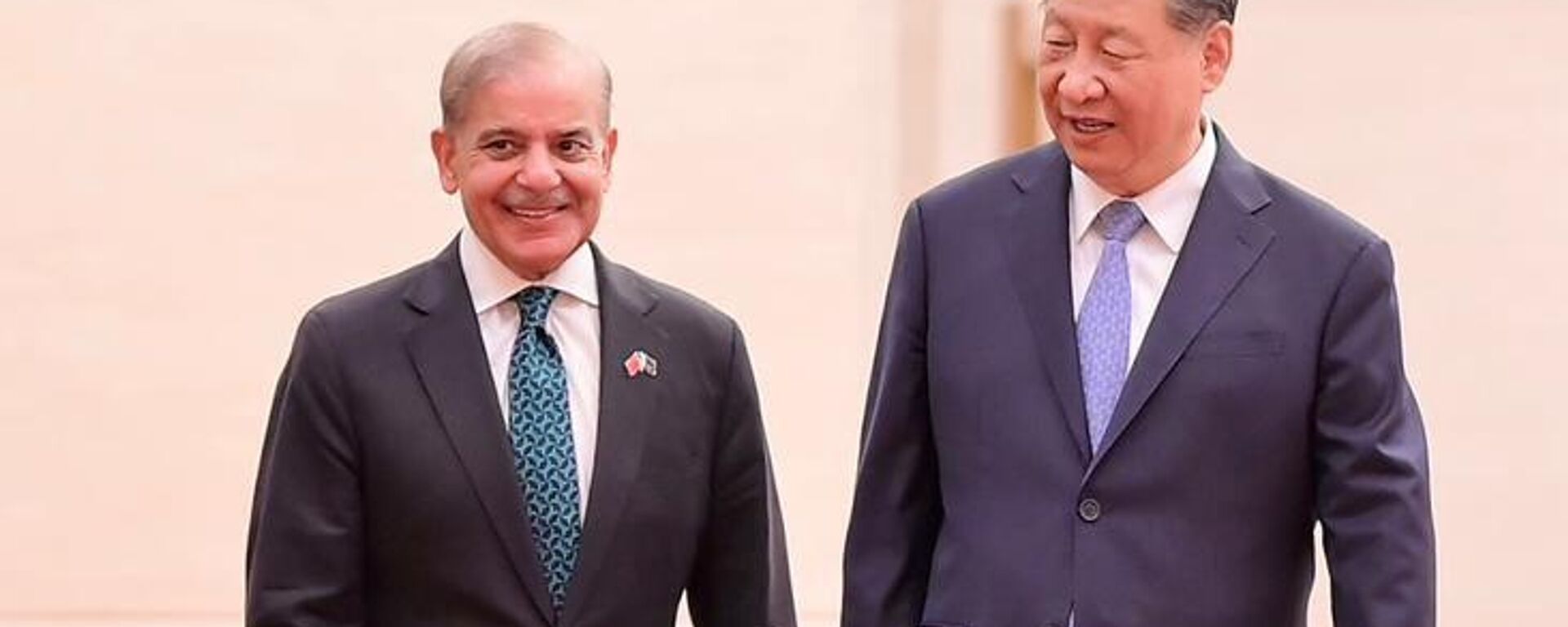https://sputniknews.in/20240623/what-role-does-china-play-in-indias-atmanirbhar-bharat-mission-7682488.html
What Role Does China Play in India's Atmanirbhar Bharat Mission?
What Role Does China Play in India's Atmanirbhar Bharat Mission?
Sputnik India
India welcome investments from China, but it's crucial that Indian companies retain at least a 51% stake in any ventures involving Chinese investments, according to experts.
2024-06-23T14:07+0530
2024-06-23T14:07+0530
2024-06-23T17:32+0530
india
china
new delhi
people's liberation army (pla)
government of india
ministry of external affairs (mea)
ministry of defence (mod)
indian ocean
indian navy
indian army
https://cdn1.img.sputniknews.in/img/07e8/03/1c/6972875_0:244:2734:1782_1920x0_80_0_0_3a48bc602b7ba47de2c2e74dee22be77.jpg
Indian government is addressing a key issue to support its ambitious Atmanirbhar Bharat initiative by addressing delays in granting visas to Chinese technical workers, reports Economic Times.India has witnessed a notable reduction in the issuance of visas to Chinese nationals i.e. from 200,000 visas in 2019 to 2,000 in 2024 since the border clash between the Indian Army and the People’s Liberation Army (PLA) at Galwan four years ago, according to high-ranking officials.Rising tensions with China have allegedly resulted in Indian electronics manufacturers experiencing $15 billion in losses in production and a decline of 100,000 jobs over the last four years.Indian firms rely on Chinese machines due to their combination of quality and cost-effectiveness, such as pick and place machines, laser cutting machines, and reflow ovens etc, Srinivasan Iyer, Managing Director of Interface Design Associates Pvt Ltd told Sputnik India.The visa application process, Iyer mentioned that "can be adjusted according to your travel dates, duration of stay, the companies you intend to visit, and your internal travel plans. All this information can be gathered and verified prior to issuing the visas"."China, with a GDP of $17.89 trillion, has invested just $8.2 billion in India over two decades. Despite India’s growth rate of more than 7% last year, Chinese investment remains unexpectedly low for such an expanding economy," Srikanth Kondapalli, Professor in Chinese Studies at School of International Studies at Jawaharlal Nehru University told Sputnik India.India Affirms No Intention of Imposing Trade Blockade on ChinaKondapalli pointed out that this amount is "significantly lower than the potential investment scale estimated at $400-500 billion for a nation growing at India's pace. The limited Chinese investment in India appears to be more due to China's lack of interest rather than any restrictions imposed by India."India has "consistently urged China to open its market, enabling sectors like pharmaceuticals, manufacturing, and IT to access opportunities in China and contribute positively to bilateral trade relations", he noted.These four alternatives were revealed during Indian President Pratibha Patil's visit to China in 2010.India Open to Chinese Investments with Key Condition"India welcome investments from China, but it's crucial that Indian companies retain at least a 51% stake in any ventures involving Chinese investments," Commodore (Retd) R. S. Vasan, Director General of the Chennai Centre of China Studies told Sputnik India.Vasan highlighted India's intention to "divert its attention from China" as part of its broader resilient supply chain strategies, which were initiated four years ago following the Galwan Clash."India's reliance on China for crucial APIs underscores this reality, particularly in the pharmaceutical sector. China and other nations are unlikely to share technologies that guarantee sustained profits over time," he added.Vasan pointed out that "India has begun diversifying through Intellectual Property India (IPI) and Indo-Pacific Economic Framework (IPEF) in iCET, along with homegrown initiatives that are showing early signs of success."These efforts are part of "a strategic move towards Atmanirbharata, with results expected not in a matter of years, but over a decade," he argued.Vasan concluded that China's emergence as a major global manufacturing center took decades, underscoring "the need for patience as we implement and await the outcomes of these measures."
https://sputniknews.in/20240609/pakistan-china-ink-multiple-agreements-to-bolster-bilateral-cooperation-7572828.html
india
china
new delhi
indian ocean
south china sea
the philippines
asean
indo-pacific
Sputnik India
feedback.hindi@sputniknews.com
+74956456601
MIA „Rossiya Segodnya“
2024
Swapna Nair
https://cdn1.img.sputniknews.in/img/07e7/09/12/4320104_0:0:681:681_100x100_80_0_0_ca8a7d4d582609272840ffdd1cde7278.jpg
Swapna Nair
https://cdn1.img.sputniknews.in/img/07e7/09/12/4320104_0:0:681:681_100x100_80_0_0_ca8a7d4d582609272840ffdd1cde7278.jpg
News
en_IN
Sputnik India
feedback.hindi@sputniknews.com
+74956456601
MIA „Rossiya Segodnya“
Sputnik India
feedback.hindi@sputniknews.com
+74956456601
MIA „Rossiya Segodnya“
Swapna Nair
https://cdn1.img.sputniknews.in/img/07e7/09/12/4320104_0:0:681:681_100x100_80_0_0_ca8a7d4d582609272840ffdd1cde7278.jpg
modi government, atmanirbhar bharat initiative, delays, granting visas, chinese technical workers, china, indian electronics manufacturers, chinese citizens, governmental, chinese companies operating, india, electronics manufacturing sector, new delhi, chinese nationals, indian army, people’s liberation army (pla), galwan, indian firms, chinese machines, quality and cost-effectiveness, pick and place machines, laser cutting machines, reflow ovens, srinivasan iyer, managing director of interface design associates pvt ltd, indian companies, engineers for installation and service, chinese engineers, china, chinese investment, rapid economic expansion, srikanth kondapalli, professor in chinese studies at school of international studies at jawaharlal nehru university, chinese investment, india, china's lack of interest, wto regulations, president pratibha patil, china, chinese investment, africa, south america, and asia; manufacturing centers, commodore (retd) r. s. vasan, director general of the chennai centre of china studies, indian government's atmanirbhar bharat, intellectual property india (ipi) and indo-pacific economic framework (ipef) in icet
modi government, atmanirbhar bharat initiative, delays, granting visas, chinese technical workers, china, indian electronics manufacturers, chinese citizens, governmental, chinese companies operating, india, electronics manufacturing sector, new delhi, chinese nationals, indian army, people’s liberation army (pla), galwan, indian firms, chinese machines, quality and cost-effectiveness, pick and place machines, laser cutting machines, reflow ovens, srinivasan iyer, managing director of interface design associates pvt ltd, indian companies, engineers for installation and service, chinese engineers, china, chinese investment, rapid economic expansion, srikanth kondapalli, professor in chinese studies at school of international studies at jawaharlal nehru university, chinese investment, india, china's lack of interest, wto regulations, president pratibha patil, china, chinese investment, africa, south america, and asia; manufacturing centers, commodore (retd) r. s. vasan, director general of the chennai centre of china studies, indian government's atmanirbhar bharat, intellectual property india (ipi) and indo-pacific economic framework (ipef) in icet
What Role Does China Play in India's Atmanirbhar Bharat Mission?
14:07 23.06.2024 (Updated: 17:32 23.06.2024) India welcome investments from China, but it's crucial that Indian companies retain at least a 51% stake in any ventures involving Chinese investments, according to experts.
Indian government is addressing a key issue to support its ambitious Atmanirbhar Bharat initiative by addressing delays in granting visas to Chinese technical workers, reports Economic Times.
India has witnessed a notable reduction in the issuance of visas to Chinese nationals i.e. from 200,000 visas in 2019 to 2,000 in 2024 since the border clash between the Indian Army and the People’s Liberation Army (PLA) at Galwan four years ago, according to high-ranking officials.
Rising tensions with China have allegedly resulted in Indian electronics manufacturers experiencing $15 billion in losses in production and a decline of 100,000 jobs over the last four years.
Indian firms rely on Chinese machines due to their combination of quality and cost-effectiveness, such as pick and place machines, laser cutting machines, and reflow ovens etc, Srinivasan Iyer, Managing Director of Interface Design Associates Pvt Ltd told Sputnik India.
While these machines "can be imported through Indian companies equipped with trained engineers for installation and service, this option may not be feasible if the volumes are low. In such cases, allowing Chinese engineers becomes necessary," he added.
The visa application process, Iyer mentioned that "can be adjusted according to your travel dates, duration of stay, the companies you intend to visit, and your internal travel plans. All this information can be gathered and verified prior to issuing the visas".
"China, with a GDP of $17.89 trillion, has invested just $8.2 billion in India over two decades. Despite India’s growth rate of more than 7% last year, Chinese investment remains unexpectedly low for such an expanding economy," Srikanth Kondapalli, Professor in Chinese Studies at School of International Studies at Jawaharlal Nehru University told Sputnik India.
India Affirms No Intention of Imposing Trade Blockade on China
Kondapalli pointed out that this amount is "significantly lower than the potential investment scale estimated at $400-500 billion for a nation growing at India's pace. The limited Chinese investment in India appears to be more due to China's lack of interest rather than any restrictions imposed by India."
India has "consistently urged
China to open its market, enabling sectors like pharmaceuticals, manufacturing, and IT to access opportunities in China and contribute positively to bilateral trade relations", he noted.
Kondapalli emphasised that "India does not seek to impose a trade blockade on China, despite suffering a significant $1.6 trillion loss in the last 20 years. India has proposed four alternatives to achieve compliance with WTO regulations".
1.
Urging China to open its market;
2.
Encouraging Chinese investment in India;
3.
Proposing joint exploration of third-party markets in regions such as Africa, South America, and Asia;
4.
Suggesting collaboration on manufacturing centers and other initiatives;
These four alternatives were revealed during Indian President Pratibha Patil's visit to China in 2010.
India Open to Chinese Investments with Key Condition
"India welcome investments from China, but it's crucial that Indian companies retain at least a 51% stake in any ventures involving Chinese investments," Commodore (Retd) R. S. Vasan, Director General of the Chennai Centre of China Studies told Sputnik India.
The Indian government's Atmanirbhar Bharat vision is closely linked to Indian companies maintaining at least 51% ownership in joint ventures with Chinese firms.
Vasan highlighted India's intention to "divert its attention from China" as part of its broader resilient supply chain strategies, which were initiated four years ago following the Galwan Clash.
"India's reliance on China for crucial APIs underscores this reality, particularly in the pharmaceutical sector. China and other nations are unlikely to share technologies that guarantee sustained profits over time," he added.
Vasan pointed out that "India has begun diversifying through Intellectual Property India (IPI) and Indo-Pacific Economic Framework (IPEF) in iCET, along with homegrown initiatives that are showing early signs of success."
These efforts are part of "
a strategic move towards Atmanirbharata, with results expected not in a matter of years, but over a decade," he argued.
Vasan concluded that China's emergence as a major global manufacturing center took decades, underscoring "the need for patience as we implement and await the outcomes of these measures."



